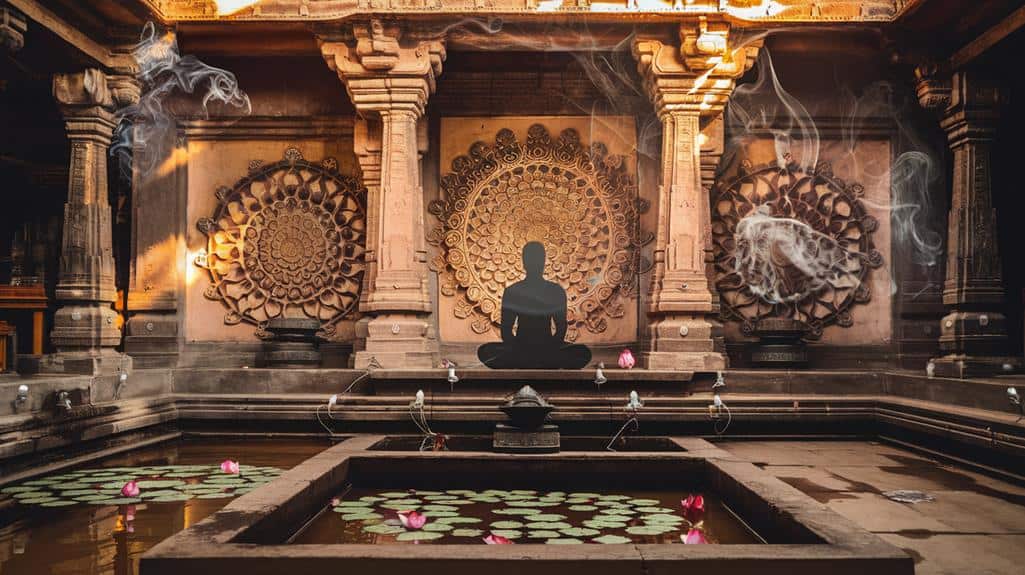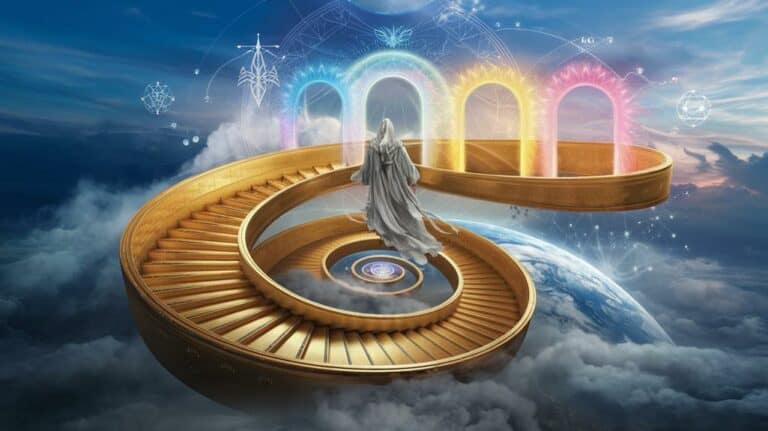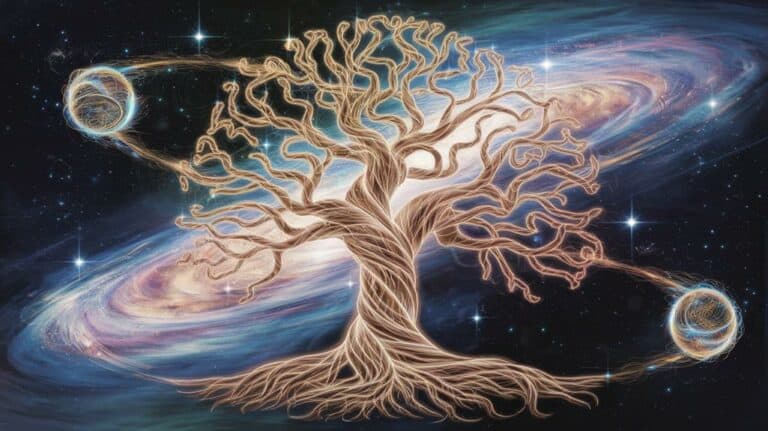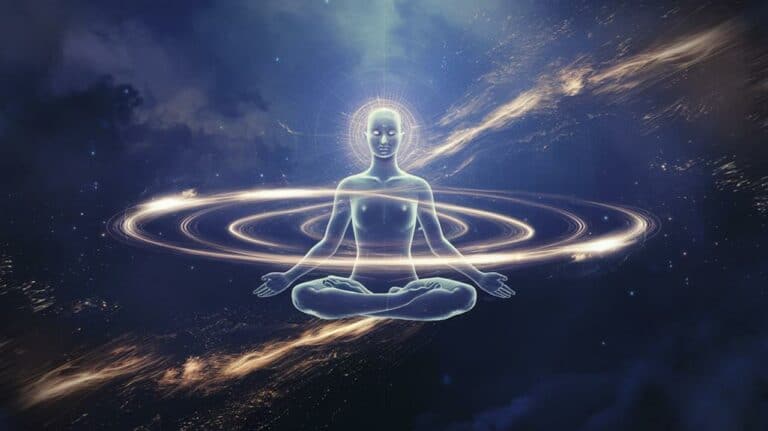Mysticism Meaning in Hindi
You’ll find that mysticism in Hindi culture, known as तंत्र-मंत्र (Tantra-Mantra), goes far beyond simple spiritual practices or religious rituals. It’s an intricate system of ancient wisdom that offers pathways to direct divine experience through specific techniques and sacred knowledge. While many associate it solely with mantras and meditation, the true scope of Hindi mysticism encompasses everything from energy work to advanced consciousness studies. The deeper you explore this rich tradition, the more you’ll discover how its age-old practices continue to transform modern seekers—and there’s much more to this fascinating spiritual science than meets the eye.
Origins of Hindi Mysticism
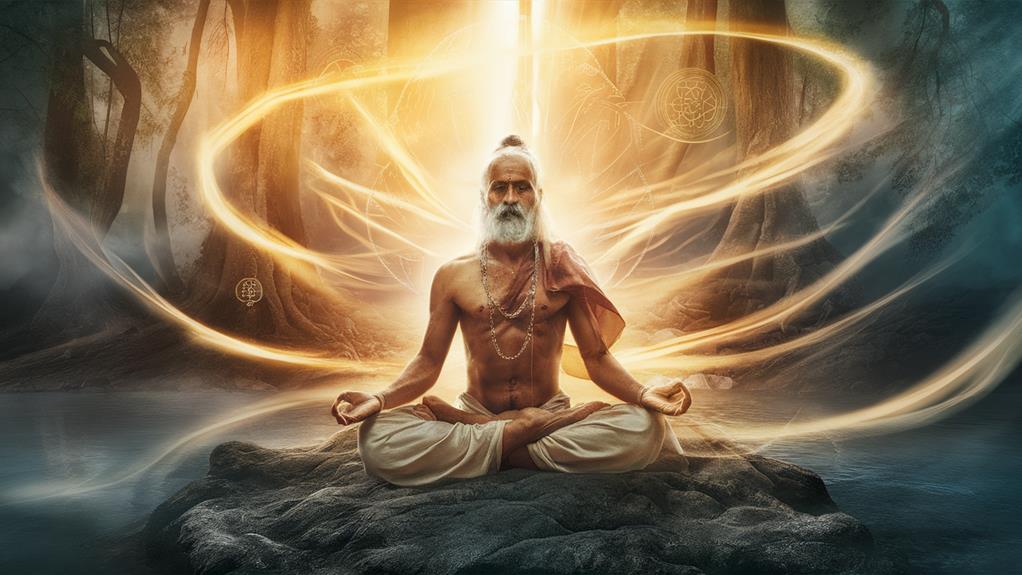
Hindi mysticism traces its roots to ancient Indian spiritual traditions that emerged over 3,000 years ago in the Vedic period. You’ll find that these early mystics sought direct communion with the divine through meditation, ritual, and contemplative practices that transcended ordinary consciousness.
As you explore deeper, you’ll discover how the Upanishadic sages developed sophisticated philosophical frameworks that would later influence Hindi mysticism. They’re the ones who first articulated concepts like “Brahman” (ultimate reality) and “Atman” (individual soul), establishing the foundation for future mystical explorations.
Through the centuries, you’ll notice how Hindi mysticism evolved as various spiritual movements emerged. The Bhakti movement particularly transformed the landscape, making mystical experiences accessible to everyone, regardless of caste or social standing.
You’re inheriting a tradition where wandering saints composed devotional poetry in vernacular Hindi, breaking away from Sanskrit’s exclusivity.
This mystical heritage continues to shape your spiritual journey today, offering you pathways to transcendent experiences through practices like mantra meditation, devotional singing, and contemplative reflection – tools that have been refined through millennia of spiritual exploration.
Core Mystical Practices
Delving into the core mystical practices of Hindi tradition reveals several fundamental techniques that mystics have refined over centuries.
You’ll discover that meditation (dhyana) forms the cornerstone of these practices, where you’re invited to transcend ordinary consciousness through sustained inner focus and breath awareness.
Through pranayama, you’ll learn to harness the essential force of breath, allowing you to access deeper states of consciousness while purifying both body and mind.
You’ll find that mantra recitation serves as a powerful gateway, where sacred sound vibrations align your energy with universal frequencies, creating bridges between the mundane and divine domains.
The practice of bhakti, or devotional surrender, offers you a path of heart-centered transformation, where you’ll dissolve the barriers between self and divine through love and dedication.
You’ll encounter kundalini awakening techniques that guide you to activate dormant spiritual energy, rising through your subtle body’s energy centers.
These practices aren’t mere rituals but transformative tools that’ll help you pierce the veil of ordinary reality and experience the profound depths of mystical awareness.
Ancient Mystical Traditions
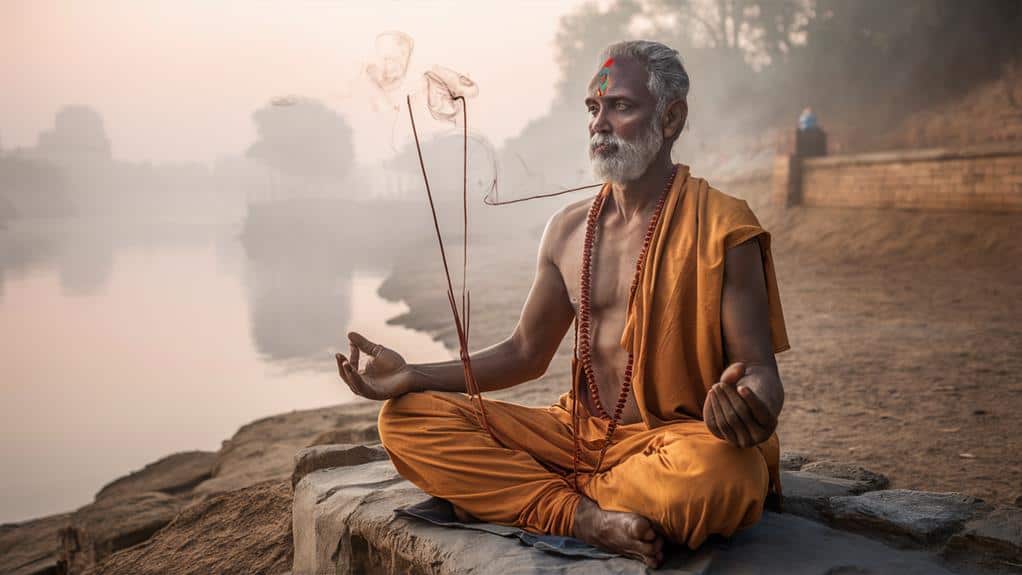
Ancient wisdom keepers preserved mystical traditions in India through an unbroken lineage stretching back thousands of years. You’ll discover that these sacred teachings were carefully passed down through guru-shishya parampara, where enlightened masters transmitted profound spiritual knowledge directly to their disciples.
Within this ancient framework, you’re connecting to practices that have helped seekers reveal the mysteries of consciousness for millennia.
When you explore India’s mystical heritage, you’ll encounter the Vedantic traditions that illuminate the nature of ultimate reality, alongside Tantric paths that transform ordinary experience into divine awareness.
You’re walking in the footsteps of rishis who spent lifetimes perfecting techniques to pierce the veil of illusion and glimpse eternal truth. The ancient traditions teach you that enlightenment isn’t just a distant goal – it’s your natural state, waiting to be discovered through dedicated practice and grace.
These timeless teachings continue to offer you practical methods for self-realization, including meditation, mantra recitation, and contemplation of sacred texts.
Through these traditional approaches, you’re invited to discover the same transformative wisdom that’s guided countless seekers to liberation.
Mystical Masters and Teachers
The mystical traditions of India have been illuminated through the ages by remarkable spiritual masters who’ve achieved the highest states of consciousness.
You’ll discover that these enlightened beings, from ancient rishis to contemporary gurus, serve as living bridges between the mundane and divine domains, helping you navigate the subtle territories of consciousness.
When you study the lives of masters like Ramakrishna, who experienced samadhi while merged in divine ecstasy, or Ramana Maharshi, who realized the Self at age sixteen, you’ll understand that mystical attainment isn’t merely theoretical.
These teachers embody the transformative power of spiritual practices, showing you that direct experience of the Divine is possible in this lifetime.
You’ll find that India’s mystical masters don’t just teach through words – they transmit wisdom through their presence, silence, and living example.
Whether you’re drawn to the devotional path of saints like Mirabai, the yogic disciplines of Patanjali, or the non-dual teachings of Adi Shankara, you’ll discover that these luminaries offer different approaches to the same ultimate truth.
Modern Hindi Mystical Movements
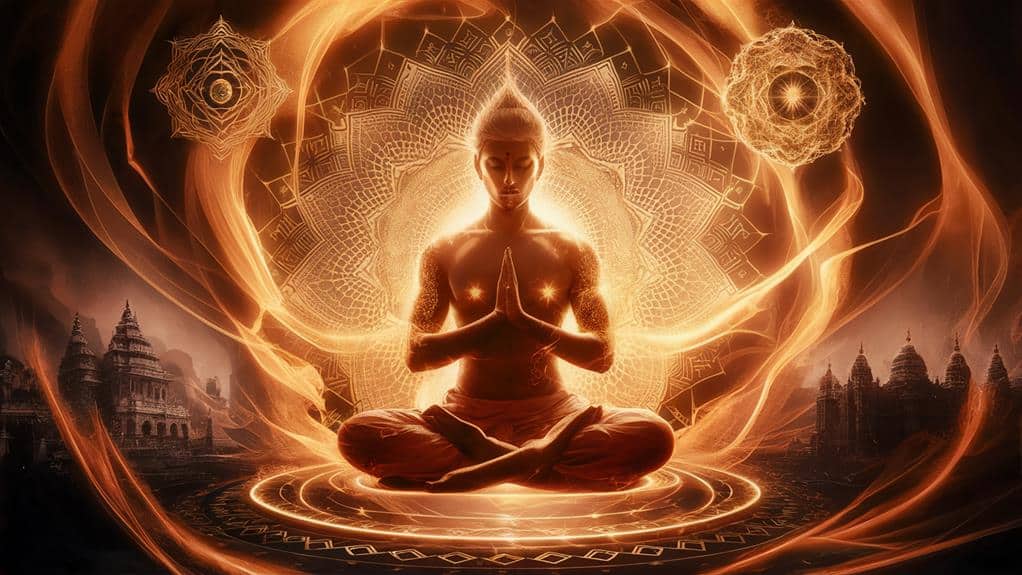
Throughout India’s modern spiritual landscape, mystical movements continue to evolve while preserving traditional wisdom. You’ll find contemporary Hindi mystical traditions like Sant Mat and Radhasoami flourishing alongside age-old practices, offering seekers direct paths to divine experience. These movements have adapted ancient teachings for today’s world while maintaining their essential spiritual core.
In urban centers and remote ashrams alike, you’ll discover how modern Hindi mysticism has embraced both tradition and innovation. Organizations like the Art of Living Foundation and Brahma Kumaris have created bridges between classical mystical practices and contemporary life, helping you navigate spiritual growth in an increasingly complex world. The emphasis remains on direct experience rather than mere intellectual understanding.
You’ll notice how these movements often blend meditation, devotional practices, and service to humanity, creating holistic approaches to spiritual development. They’ve made mystical wisdom more accessible while preserving its transformative power.
Through these contemporary channels, you can explore the depths of consciousness using methods that resonate with modern sensibilities, all while staying connected to India’s rich mystical heritage.
Conclusion
As you explore Hindi mysticism, you’ll discover it’s not just an ancient practice but a living tradition that continues to transform lives today. Through the sacred pathways of Tantra-Mantra, you’re invited to investigate dimensions beyond the ordinary, connecting with timeless wisdom that transcends cultural boundaries. Whether you’re drawn to meditation, mantras, or devotional practices, this spiritual journey offers profound insights into your innermost nature and the cosmic reality.



